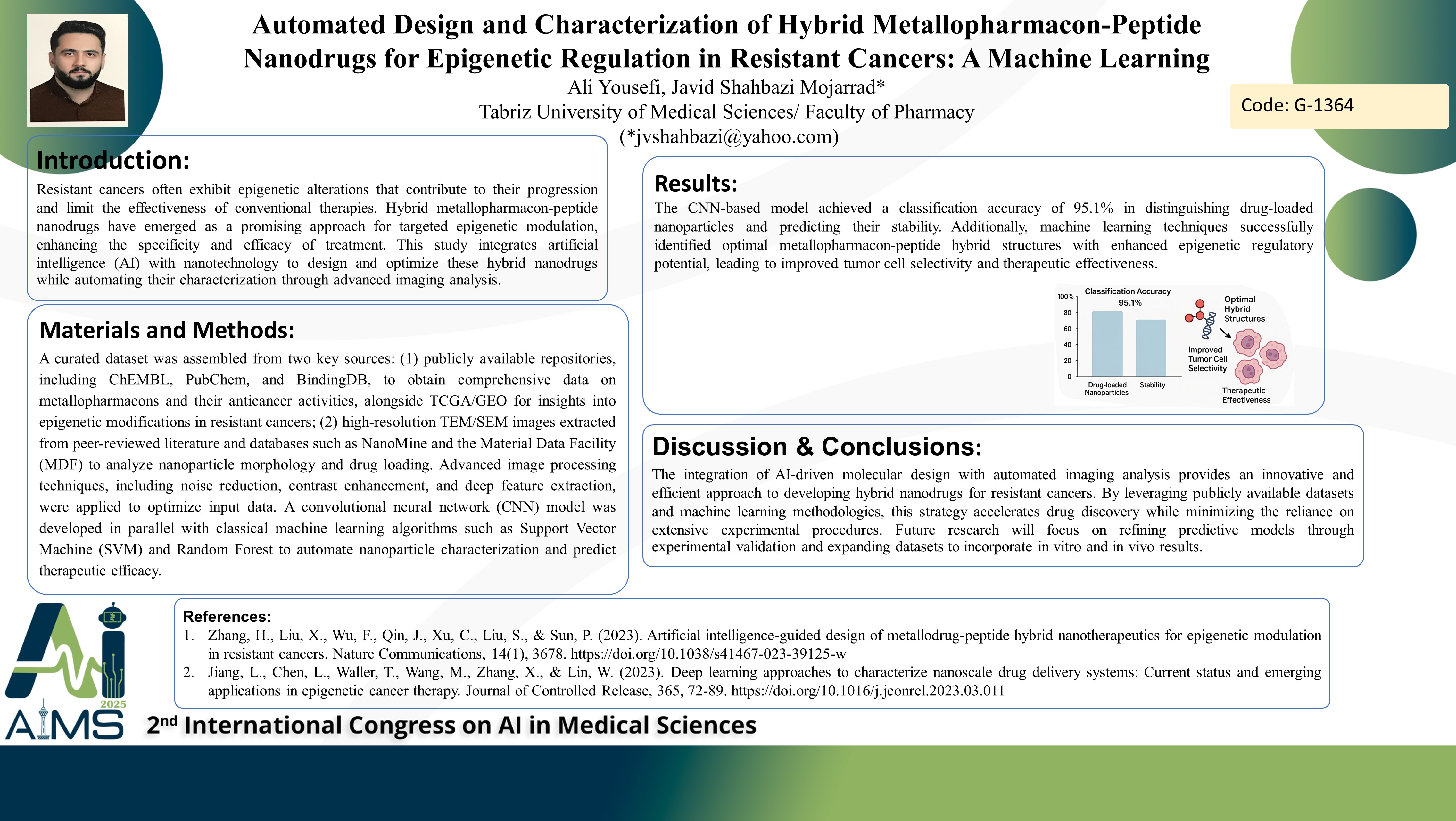طراحی و شناسایی خودکار نانوداروی هیبریدی متالوفارماکون-پپتید برای تنظیم اپیژنتیک در سرطانهای مقاوم: یک رویکرد مبتنی بر یادگیری ماشین
کد: G-1364
نویسندگان: Ali Yousefi ℗, Javid Shahbazi Mojarrad *
زمان بندی: زمان بندی نشده!
برچسب: کشف و طراحی دارو
دانلود: دانلود پوستر
خلاصه مقاله:
خلاصه مقاله
Background and aims: Resistant cancers often exhibit epigenetic alterations that contribute to their progression and limit the effectiveness of conventional therapies. Hybrid metallopharmacon-peptide nanodrugs have emerged as a promising approach for targeted epigenetic modulation, enhancing the specificity and efficacy of treatment. This study integrates artificial intelligence (AI) with nanotechnology to design and optimize these hybrid nanodrugs while automating their characterization through advanced imaging analysis. Method: A curated dataset was assembled from two key sources: (1) publicly available repositories, including ChEMBL, PubChem, and BindingDB, to obtain comprehensive data on metallopharmacons and their anticancer activities, alongside TCGA/GEO for insights into epigenetic modifications in resistant cancers; (2) high-resolution TEM/SEM images extracted from peer-reviewed literature and databases such as NanoMine and the Material Data Facility (MDF) to analyze nanoparticle morphology and drug loading. Advanced image processing techniques, including noise reduction, contrast enhancement, and deep feature extraction, were applied to optimize input data. A convolutional neural network (CNN) model was developed in parallel with classical machine learning algorithms such as Support Vector Machine (SVM) and Random Forest to automate nanoparticle characterization and predict therapeutic efficacy. Results: The CNN-based model achieved a classification accuracy of 95.1% in distinguishing drug-loaded nanoparticles and predicting their stability. Additionally, machine learning techniques successfully identified optimal metallopharmacon-peptide hybrid structures with enhanced epigenetic regulatory potential, leading to improved tumor cell selectivity and therapeutic effectiveness. Conclusion: The integration of AI-driven molecular design with automated imaging analysis provides an innovative and efficient approach to developing hybrid nanodrugs for resistant cancers. By leveraging publicly available datasets and machine learning methodologies, this strategy accelerates drug discovery while minimizing the reliance on extensive experimental procedures. Future research will focus on refining predictive models through experimental validation and expanding datasets to incorporate in vitro and in vivo results.
کلمات کلیدی
Artificial Intelligence, Nanodrug, Metallopharmacon, Epigenetic Regulation
